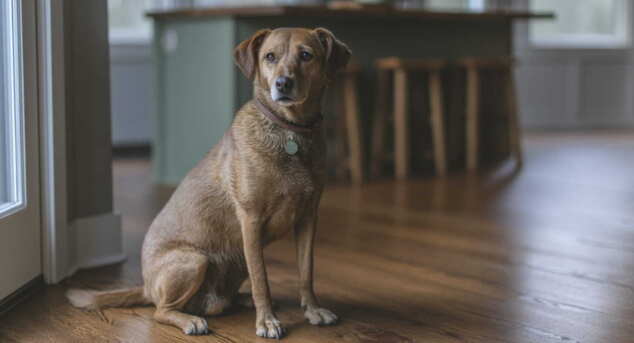Mahogany Red to Cool Brown Color!
Posted by Aaron Schaalma
Did you know that wood floors are like chameleons and can change color instantly?
Okay just kidding! But just because the natural color of your wood floor or stairs is a certain color doesn't mean you are stuck with it. Some species of wood you can just stain and change the color that way. Others require a bit more skill, knowledge and technique to change the color.
Stair Project Example
Let's take a look at these wood stairs and landing I was able to transform for one of my clients in Neenah, WI.
This project was definitely more challenging than others, as the customer wanted to go from the natural red tones of mahogany, to a more subtle brown tone.
In addition to this, the landing area between the flights of stairs was in a herringbone pattern which makes additional work for the sanding process, especially because this floor was going to be stained a different color. Knowing that this floor was about to undergo some major changes, it was crucial to make sure that we set ourselves up for success.
When sanding a floor, we want to sand with the grain of the wood, so that any minor scratch marks from sanding are oriented the same way as the pattern of the wood grain. However, it is impossible to do this with a herringbone pattern, because the boards are oriented in such a way that the wood grain faces different directions. In order to minimize the scratch marks from sanding we used machines and various grits of and paper to achieve a scratch free surface from a standing upright position. This was done using an edger and then followed up with a rotex sander.
Color Change
Once we had finished sanding and removed all the finish off of the herringbone landing and the stairs, it was time to start changing the color of the mahogany floor. In order to remove the natural red color from the floor, we needed to use a two-part commercial bleach on the floor. This isn't your normal type of household bleach, and as such, it required a lot of protective gear for the application. We avoided any unnecessary risk by protecting our skin, hands, eyes and respiratory system from this bleach. Once we mixed up the bleach we applied one coat evenly over the floor and then let it sit until it was completely dry, and then applied a second coat. The bleach requires about 24 on the floor to be effective, which after that time we washed the floor with clean water to neutralize its affect.

After the bleaching process was complete, the red tones of the floor were gone and we had a very neutral pallet to work with. The final color for the floor involved two custom colors of Rubio Monocoat that were layered over top of each other. The first color was applied, and then 16 hours later, the second custom color was applied over top of that to give the floor its final signature touch. We couldn't have been more thrilled with the outcome of this project.
When it comes to hardwood flooring, the benefit over other types of flooring is that the color can be changed without having to replace the floor.
So, if you have a floor that you want to change to a unique color contact us, we would love to give your floor a Signature look!
Please check out our hardwood floor trends guide to see even more examples including some brown tones explored in this project.



